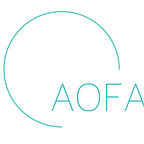Rejection and Embrace | Lewis Gesner
Avoid anything that satisfies you to do in making art.
閱讀中文版
If you are an artist, you might be inclined to do what satisfies you or makes you happy. If you make a mark, phrase, or sound that you think is good, you might want to do it again, or continue to do similar things, to hold onto the feeling of progress or success. By doing so, you grow or develop in one direction. You build on what you do, you become better, and your art will be compounded until you have a body of “coherent” work. You have also eliminated the number of opportunities to discover something different or new that is equal to the number of your repetitions. That is the price of a career, of proven success, and of establishment. But I recall a funny memory from my childhood. I was a precocious one, always looking into new things. Somehow my father found that a research laboratory doing early genetics studies was near where we lived. As an amateur gardener/farmer, he had an interest, as did I for other reasons. So, one day when I was nine years old, he brought me to the lab to hear a public lecture. I remember starting up my little tape recorder to catch every word, from my perch on a front row seat. The main subject was genetics and evolution, the epitome of human development and growth. As soon as questions were allowed from the public, I raised my hand and in my squeaky voice asked, “How many generations does it take for a mutation to take place?” He was quiet for a moment, perhaps surprised at my fairly sophisticated question. Then he answered, simply and directly. “One,” he said. The audience laughed. My deep question had a simple, superficial answer. And it was profound for me. He meant, in his view, evolution wasn’t a matter of incremental and exacting steps toward perfection. Evolution was a process resulting from accidents in the DNA, mutations that happened all the time. Most were a disadvantage, so the individual died quickly. But once in a while, it was an advantage to survival, and that individual would live to reproduce its defect over and over in its offspring. This is exactly the situation of art, and why it holds to tired traditions, and remains attached to them long after stagnation. Artists will produce the same thing over and over if it seems to succeed. Why risk likely failure, as the failed mutation. Yet once a single affirmative creation, occurring from the accidents of the noncareer builder exists, it cannot be put back in the box. It is the life germ of art’s survival as a practice. The alternative? Extinction, of course.
What to reject and what to embrace in a quest to breed a healthy art of the future? It is simpler than that question, yet its simplicity might not seem appealing or be rewarding. It has more to do with a practice, or, a nonpractice. This is it. Try not to learn. Don’t study, don’t retain anything from experience. Practice forgetting. If you find something successful or you have a liking for it, try to avoid again what you have done, and try to forget it. Avoid anything that satisfies you to do in making art. Every attempt should be fresh, without history or predetermination. Forget. Forget. Forget. Go on. Don’t improve. Be art’s savior.
About the Author|Lewis Gesner
Lewis Gesner is an artist, writer and performer who uses a variety of mediums in his work, in keeping with his philosophy. He is from America but now lives in Taiwan with his wife and children. He has exhibited broadly, including venues in Taiwan.
